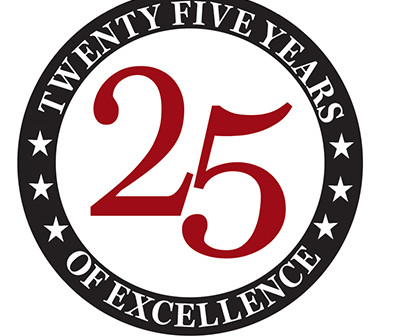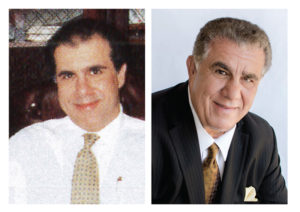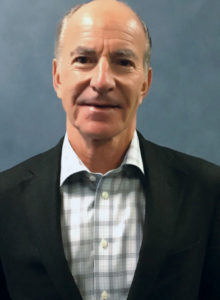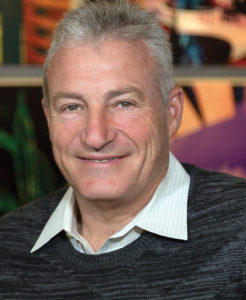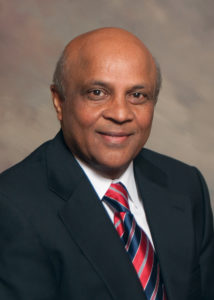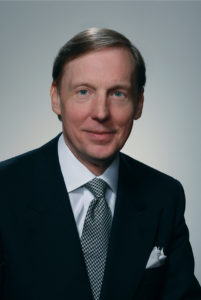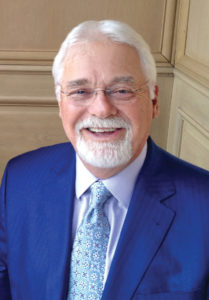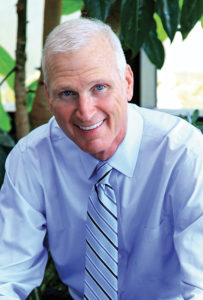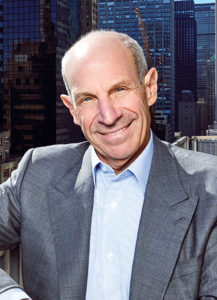Insights from industry professionals—and our readers
To celebrate our 25th-anniversary issue, the editors at Hotel Business contacted industry leaders who appeared in the first few issues we published in 1992. While many have moved from one company to another—and, certainly, up the ladder—they are still in this business and have been part of our content right along with us for a quarter of a century. Who better to recall the headlines and happenings and reminisce about those times than those who lived it? Following are some of the memories of the last 25 years.
—Christina Trauthwein
Let’s remember the Golden Era of hospitality: It’s time to blur the segmentation lines and put some original DNA back into franchising.
As I reflect on the last 25 years of hospitality, I can’t help but feel the industry has lost its glow. In the early 1990s when Hotel Business was founded, there was camaraderie among hoteliers that started at the top and trickled down to the line-level employees. Brand presidents were rock stars; everyone knew them not just by name, face and reputation in the trade press, but they led by example, and their motivation inspired the masses. They were philanthropic, creative and the heartbeat of each respective brand. Brand presidents knew the franchisees personally, and owners loved them for it. Every hotelier knew they were part of something much bigger than themselves—it was the golden era of hospitality.
The “brothers and sisters in hospitality” mentality of the ’90s was shared among competitors, too. Brand presidents played an active role in the marketing effort. As former president of Ramada, marketing and product placement was a passion of mine. Dropping the Ramada name into TV shows like The Sopranos and movies like Lake Placid was a personal accomplishment. Few can forget the “Ramada’s In/Holiday’s Out” ad campaign that ran in Hotel Business. And to this day, I still chuckle at the thought of my friend and former competitor, Mike Leven, in a hospital gown giving birth to his new brand: Microtel. It was good-spirited fun. It didn’t matter which brand you belonged to; we all had a closeness and built genuine friendships. Whatever we did, it was done for the good of the industry. But with success came change.
Today’s brand leaders are laser-focused on shareholder value and carrying out the financial goals of the consolidated matrix organization, rather than creating a culture that makes each employee proud to be part of the team and franchisees happy to be part of the system. Going back almost 50 years to the days when William B. Walton led the charge at Holiday Inns of America Inc., employees attended Holiday Inn University in Olive Branch, MS, for six weeks. Folks, this was a place where elephants went to die. But when Bill Walton walked onto the stage and began speaking, people would literally tear up. He was larger than life, and his enthusiasm for Holiday’s future became the DNA on which the brand was founded. It was infectious. In today’s multi-brand enterprise environment, it’s difficult to determine one brand from another. The intimacy of what made each brand special is, for the most part, gone.
Also in today’s hospitality environment, an undercurrent is swelling. We, as an industry, are starting to become segmented by ethnicity. This is counterproductive because it only unites hoteliers among the groups in which they belong. Ethnic organizations arose out of a need to fight discrimination, and it was, indeed, a well-justified effort. However, with each new group comes more segmentation and more separation between franchisors and franchisees. Rather than asking, “What incentives do I get as an Asian American hotel owner and member of AAHOA?” or “What special deal do I get because I’m a member of the Taiwanese Hotel Assn.?” owners should be asking, “What are the best deal terms you can offer to me as a franchisee?” Hospitality is not about entitlement. Owners don’t get a “sweeter deal” just because they are a member of NABHOOD, for example. To the franchisor, owners are not Indian, Chinese or African-American; they are a customer…a franchisee.
Instead of uniting the industry to fight ethnic discrimination, many of these groups are widening the gap. Like-minded owners are only networking with each other rather than assimilating with the rest of the industry. Hotel owners, in general, need to grow, learn and share experiences with other owners who are outside their group. We can only prosper as an industry if we broaden our knowledge and experiences. I have learned a lot from my competitors who were only too willing to share their successful and failed experiences.
While change is good, some things should remain the same. Are we, as hoteliers, really doing a better job today than we did 25 years ago? In some ways, yes; in other ways, not so much. Rather than pulling further and further apart, let’s bond by our passion for hospitality. Let’s follow the directive of the AHLA that effectively represents our collective interests as hoteliers. And let’s congratulate Hotel Business on doing a hell of a good job reporting on our successes and failures over the last two-and-a-half decades.
—Steve Belmonte, CEO
Vimana Franchise Systems LLC
(In 1992, he was president of Ramada.)
1n 1992, there was essentially one major FF&E trade show we attended once a year… That trade show also served as a way to network with our peers and others in the industry with whom we worked. Today, there are a several trade shows we attend, as well as many different types and kinds of networking events. These trade shows and networking events enable all of us to “get to know” one another, which, in turn, allows us to work together collaboratively and collegially.
In 1992, there were a lot of adversarial relationships, while today— because of the trade shows and networking events—we all are able to work together on project teams without being adversarial because of the relationships and friendships we have developed by attending those trade shows and networking events.
When Hotel Business launched in 1992, it was one of the first ways we, as an industry, began to network regularly with others. One could say that Hotel Business was—and is—a major reason that we all know one another so well!
-—Neil Locke, principal
Neil Locke & Associates
(In 1992, he was VP of Rosemont Purchasing.)
In many respects, Hotel Business and Waterford Hotel Group matured together. Just last year, Waterford celebrated its 30th anniversary. The industry has evolved and changed in so many ways over the past 25 years. We’ve gone from many individual brands to brand consolidation, which has resulted in a handful of industry giants. Competition between brands is intense, with the constant pursuit of anticipating guest wants and needs. The focus has always been on the guestrooms, but in recent years, has been redirected to include the public areas—getting guests out of their rooms and catering to the social needs of today’s travelers. And what a difference technology has made in all of our lives and in our industry. I don’t think 25 years ago, any of us could have imagined OTAs and Airbnb, or the impact they would have on our industry.
At our leadership conference last year, I began the welcome address by holding up a brass key on a plastic key fob. My intent was to remind our leaders in the simplest way just how much technology has evolved in our industry over the past 30 years. Much to my surprise, I could tell by the faces of some of our leaders in the audience that they never opened a hotel room door with a key like that. Forget about the key cards; now we are checking in with our smartphones.
For all the changes that have occurred, there are some things that remain the same—hospitality is hospitality. Buildings and processes can change but, at the end of the day, it is all about people and providing a great work environment so guests receive unique, memorable experiences. With fewer touchpoints to influence the guest, you have to get it right every time.
Gone are the days of guest comment cards. I can remember receiving them via mail to our offices—sometimes sealed with a wad of bubble gum. Now, the focus is online reviews, and the importance of maintaining the reputation of your hotel online is greater than ever. Feedback is instantaneous. We’re no longer waiting on traditional mail to come in.
There are so many memories and valued relationships developed over the years. One of my favorite memories is having Bill Marriott visit our first full-service Marriott, the Mystic Marriott, just prior to opening in 2001. He took the time to shake the hand of every single hotel associate. I will never forget the look of pride on each of their faces as he thanked them for a job well done. Now that’s hospitality.
I arrived in the United States as a 21-year-old with a big dream of owning my own hotel company, beginning as a foodservice supervisor of a 99-room Holiday Inn. I have had the privilege of working alongside some of the best in our industry and witnessing the career growth of our associates firsthand. We have so many success stories of hard-working individuals who also have achieved their dreams. As the CEO, this is the most rewarding part of all.
-—Len Wolman, chairman/CEO
Waterford Hotel Group
(In 1992, he was president of Waterford Hotel Group.)
My memories go back 25 years ago, when the hotel industry had new immigrants from India entering into the hotel business in a noticeable way. They faced stereotypes, bias and discrimination for a decade. Hotelier Mike Leven, then the president of Days Inn Hotels, saw the plight of emerging Asian hoteliers and under his enlightening leadership and support, the Asian American Hotel Owners Association (AAHOA) was formed. I was privileged to be its founding chairman, and since then, through our vision and mission of integrating and building a bridge to the hotel industry, we have been successful in eliminating the bias and stereotypes that existed then.
Also, franchise companies, 25 years ago, were skeptical and had reservations to give its franchise brands to many Asian hotel owners. Today, JHM and other Asian hoteliers have been able to win the confidence and trust of hotel franchise brands in the industry. Through hard work and commitment, the strength of Asian hoteliers is growing and excelling in the hotel business. From accidental hoteliers, they have now become professional hotel owners and operators. I have seen many Asian hotel owners with small independent hotel ownership operations move to select-service ownership operations, and with the advent of the second-generation hoteliers, I see Asian hoteliers entering into full-service hotels of ownership and operation.
A very noticeable shift is the second generation. They are venturing to gain professional education in hotel management and securing degrees, and joining the family hotel business.
The role of the AHLA has changed to advocacy and protection against regulations and legislations that are negatively affecting the hotel industry.
Through my journey of 25 years, I have met and built great relationships with Bill Marriott, chairman, Marriott Hotels; Mike Leven, president, Days Inn Hotels; Steve Joyce, CEO, Choice Hotels; Mark Hoplamazian, president & CEO, Hyatt Hotels; Chris Nassetta, president & CEO, Hilton Hotels; and Ravi Patel, president, Sree Hotels. They all have provided guidance, encouragement and support to be a part of the hotel industry in the U.S.
My learning through the years—taking leadership roles in AAHOA and AHLA—provided me an opportunity to be part of hospitality education and inspired me to promote and found Auro University in Surat, Gujarat. Auro University’s mission is to provide transformative and value-based education for leaders of tomorrow.
I take great pride in stating that my journey in the hotel industry was instrumental in helping me realize my American Dream. Owning a small, independent motel provided me my first in lifetime self-employment opportunities and also helped me use my entrepreneurial spirit in owning and operating full-service, large hotels. I look back with a great sense of adventure.
—H.P. Rama, chairman & CEO,
JHM Hotels
(In 1992, he was CEO of JHM Enterprises.)
Here a few thoughts about then and now, and how much the lodging industry has changed since “then” when I started my career in lodging:
• Hilton and Sheraton were the renowned brands, and Marriott was emerging with its new concept of a low-rise-plus-tower design.
• “Brand” was defined as the dominant source of reservations and responding to guest preferences for uniformity (one brand had the same art in its Washington, DC and Hawaii hotels).
• Collection of occupancy rate data for appraisals and market studies was obtained by visiting hotels during the night and befriending the night auditors.
• Supply segments were luxury, full-service and motel.
• The balance of power was close to equal between owners and brand management companies.
• Revenue/yield management was something airlines did.
• The most common way to compare room rates among hotels was to look under “Hotels and Motels” in the Yellow Pages and call 800 numbers. The first question would usually be, “Is there a [name of brand]hotel in [city]?”
• Men traveling on commercial flights generally wore suits and ties; if a traveler missed a flight, that was not a problem, there would almost always be an available seat on the next flight.
• There was only one female general manager of a major New York hotel (until the early 1990s).
• Guests could request no-smoking rooms and to be seated in the no-smoking sections of restaurants and airplanes.
• Many—or even most—hotel kitchens and laundry rooms were not air-conditioned.
• Guests traveling by car used free maps from gas stations for directions.
• The front desk was tall and wide to make it difficult for robbers to jump over the desk to steal cash from the cash registers. (Why are so many front desks still tall and wide?)
• The night audit really involved an audit.
• Public companies were for other industries, not more than a lodging company or two.
• A hotel could be defined by a lobby, and guestrooms with a door, beds, bathroom, television set, radio alarm clock, telephone and place to hang clothes.
And, what has not changed:
• Lodging professionals share common values about providing hospitality.
• Guest preferences change and diversify and the industry constantly innovates and responds…but every now and then, there is a disrupter from outside the industry (boutique hotels, extended-stay hotels, conference centers, sharing economy, OTAs).
• The industry provides interesting and challenging jobs and careers with opportunities for advancement to colleagues with all levels of experience and education.
• The lodging industry is a part of among the most important personal and business moments in peoples’ lives, including weddings, holidays, anniversaries, vacations, product announcements, training, temporary housing when a home is damaged or unavailable, travel for job interviews, and on and on.
—Bjorn Hanson, clinical professor Jonathan M. Tisch Center
for Hospitality and Tourism at NYU
(In 1992, he was principal at Coopers & Lybrand.)
I’ve worked very few days since starting in the hotel business in 1973. When you love what you do, surround yourself with good people and learn to empower them, it’s not work. I’ve had more than my fair share of fun along the way.
From my perspective, that’s the greatest thing about the hospitality business; you don’t get anywhere without building relationships. I’ve done as many deals with a fishing rod in my hand or a pair a snow skis on top of a mountain as I have in a boardroom. That’s my kind of business. That’s the hospitality business.
Over the years, one of the most rewarding aspects of my career in hospitality has been the opportunity to involve so many of my close friends and family members in the business and observe them being successful. [Dennis] Brown and I, [Dennis] Bale and [Loren] Steele—we were all selling franchises and developing properties. In the ’70s and ’80s, we were calling everyone we knew to get in and develop a hotel (or motel as we called them). Plumbers, insurance salesman, bankers, lawyers, farmers, doctors; it didn’t matter what they were doing at the time. One plumber, in particular, was ultimately responsible for 80-plus Super 8 Motel locations at the time we sold the chain in ’93. He and I remain great friends to this day. That level of commitment by my people and the inclination to share the opportunity with everyone really embodies the spirit of hospitality.
If you ask me, I think the biggest change in the hospitality industry over the past 20-30 years is the complexity of the product and operating platforms, and the often-disconnected nature of the franchise relationship has become a big barrier to entry. Now, in some cases, that’s not all bad; some people just don’t get hospitality. But, in many cases, the industry has lost focus on empowering the entrepreneurial-minded person to step in. During my period of growing the chain, many of the best Super 8s were owner-operated or under closely held management, and although the industry has changed, I bet that’s still true among most, if not all, of the franchised brands out there.
So, after 20 years as a franchisor growing Super 8, and almost 20 years as a franchisee of many of the major brands, I’m back in the franchisor’s seat with My Place Hotels of America, and I’m really enjoying it. Very few people have the opportunity to experience success like this twice in their life, and I’ve learned over the years that with a little luck and a lot of good people, the sky is the limit.
Plus, this time around, we know what we’re doing.
So, as I look toward reaching that 100-property mark in 2018, project the 1,000-property mark in 2024 and the potential of my organization beyond that, success a second time around is an exciting reality.
—Ron Rivett, chairman
My Place Hotels of America LLC
(In 1992, he was chairman of Super 8.)
Twenty-five years seems like a blink of the eye; yet when I look at the major influences in the hospitality industry today, it becomes clear that many of them were just getting off the ground in the early 1990s.
Hotel Business, a leading industry publication, was publishing for the first time; the internet was in its infancy and showing unlimited potential; and AAHOA was gaining momentum as a proud defender of free enterprise and a leading example of the American Dream. These three contributors combined to form the perfect storm and, like a tornado seeking a trailer park, provided the ideal opportunity for someone like me to turn the franchise industry upside down.
I have been involved in the hotel industry nearly my entire life, but it wasn’t until the early ’90s that I moved out of operations and into franchising and development. Combining my operations and franchise experience gave me a 365-degree view of the industry, allowing me to see that there had to be a better way to franchise and it was time for a new business model.
Through the launch of Vantage Hospitality Group and our first brand, Americas Best Value Inn, my partners and I gave control back to the hotel owners when we gave them a voice and a vote. Not only did they vote on major brand initiatives, but they voted on fees—literally dictating our salaries and telling us how much they were willing to pay. While this may have caused mutiny at other major brands, it solidified our reputation as a very transparent company that lives by the honor of a handshake and puts the interests of its owners first.
I’d like to thank Hotel Business for giving our members, corporate team and brands a voice and telling our story to the franchise industry. You’ve done a great job of providing timely and accurate information to an industry that is changing every day, and I continue to depend on your facts and figures to make critical decisions.
Over the last 25 years, we’ve seen some amazing technology that has transformed the way we work and live. But our basic human instinct still demands a personal touch and human interaction. Today, we have satellite offices all over the world and communicate in real time through email, Skype, webinars, etc. Yet, our airplanes and hotels are full of business travelers because there is a strong need to see, hear and interact with other individuals. There is still a need to shake that person’s hand and look him in the eye, and the next generation must learn how to balance hi-tech with hi-touch.
Looking back to 1992, I’m very fortunate to say that the people who were my friends, colleagues and mentors throughout my career are still very active in my life. Change is something that we all need to embrace, but it’s more enjoyable doing it with the people you can always count on.
—Roger Bloss, EVP & president/global development
RLHC Red Lion Hotels Corporation
(In 1992, he was SVP/franchising development, Economy Lodging Systems.)
I needed a few moments to collect my thoughts about 1992. After digging deep into the history of our industry and my company, Valley Forge Fabrics, I just realized what a milestone year 1992 was. It was a pivotal year for the hospitality industry.
In 1992, Valley Forge Fabrics outgrew our offices in New York City and Pennsylvania. We moved lock, stock and barrel to Fort Lauderdale, FL, with 10 families. To my husband, Dan, and me, it seemed like we were crossing the wide expanse of the nation in a covered-wagon train. Bill Clinton was just elected president. The great recession was still pulling us down, and the massive Hurricane Andrew destroyed much of the East Coast. Perhaps, more memorable was the Rodney King-inspired civil unrest in Los Angeles and other cities. I remember the 1992 L.A. riots, in particular, because we participated in the second annual Hospitality Design show at the L.A. Convention Center during the spring of that year.
At the show, we had around 110 exhibitors, some of whom are still here today. As we were setting up, billowing smoke and multiple sirens and alarms were going off all over the place. Just prior to the actual opening of the show, M.J. Madigan, the editor of Hospitality Design, called a meeting of all exhibitors and announced that the show was canceled. It was somewhat of a relief as we were all a bit worried and uncomfortable. All of the exhibitors, and the few attendees who were there, were hoping that this show would give a boost to the FF&E and design side of our industry. As the president of the New York NEWH Chapter, I was especially looking forward to recruiting more members to our young, fledging national organization.
Despite those rough days in Los Angeles, we in the hospitality industry had larger, more serious economic problems to contend with. The country was in the grip of a deep recession, and we were all worried about business. Early in 1992, the Cornell H.R.A. Quarterly wrote, “The nation’s recession has a particularly tight grip on the hotel industry.” Further into the article, we read, “Because the market is so crowded, hotels will have trouble competing on quality.” How fearful we were, as we read those sage words and witnessed the social and economic upheaval dominating the daily headlines. Yes, 1992 was indeed a pivotal year. Yet, we grew as an industry. Dan and I, together with our children Diana and Michael and, more recently, Allie, grew Valley Forge Fabrics. Concurrently, I am proud that my humble efforts, along with the efforts of many others, helped NEWH to grow into the large, dynamic organization it is today. In 1992, the press thought the hotel market was crowded and that hotels would have a hard time competing on quality. Little could we imagine the growth that would actually take place.
The pioneering spirit and “can do” attitude of the people who grew—and continue to grow our industry—makes me very proud. It is truly awesome to think of all we have accomplished—and continue to accomplish—in this very dynamic and strong industry. During the final days of 1992, an article in The New York Times business section boosted all of our spirits. The headline read “Hotel Profits for 1992 Show a Slow but Steady Recovery.” Further on, it said, “On a sharp, unexpected turnabout, more than half the national hotels turned a profit last year—the first time since 1989 that more than 50% were profitable.”
As I recall 1992 and the start of the Hotel Business Media Group, I remember an article in the first issue of Hotel Business mentioning the contributions of our many pioneers: Sarah Tomerlin Lee, Jonathan Tisch, Dorrit St. John, Elsi Dahlin, Helen Marcus and Willie Landau, to name but a few. That year changed us all and pushed our industry into the economic powerhouse that it is today. Thank you, Hotel Business, for being an integral part of that growth, which has also enabled Valley Forge Fabrics to become what it is now.
As we celebrate our 40th anniversary this year, it has given us the opportunity to reflect on the industry and our business. Being a part of the evolution and growth of hospitality, overall, has encouraged our family business to focus on supplying the most innovative, performance and sustainable textiles available. Today, we have a total offering of more than one million textile-related products. As we have grown within this industry, our company has never lost site of the valuable people who have helped us along the way, and we continue to prioritize people above all.
-—Judy Dobin, “chairmom”
Valley Forge Fabrics Inc.
(In 1992, she was chapter president of NEWH.)
As Hotel Business celebrates a significant milestone, I think about how our industry has grown and evolved over the past 25 years.
From an industry association perspective, the Travel Business Roundtable, a CEO-based industry organization focused on government affairs that I was honored to found and chair, joined with the Travel Industry Association to form the US Travel Association. As an industry, we began to speak with a united voice and greatly improved our standing on Capitol Hill. We successfully passed the Travel Promotion Act, created Brand USA, and strengthened and expanded the Visa Waiver Program. Today, there is a better understanding of the important economic, as well as social, impact of the industry among elected officials, both at the national and local levels.
As someone who has grown up in the lodging industry and has been a part of it professionally for more than 30 years, I look back on how the industry has grown, and I distinguish between the “hotel business” and the “business of hotels.” Today, the “business of hotels” is more complex and competitive than ever. There are major financial players and institutions that invest in and own hotels, including private equity, sovereign wealth funds and wealthy individuals. Financial analysts cover the industry and technology has changed how we do business. What hasn’t changed, however, is what I call the “hotel business.” At its core, it is about taking care of people and making them feel safe and secure.
A constant over the years has been the respect I have for industry leaders. Following 9/11, the industry put aside our individual differences and worked together for the greater good. I will always remember walking the halls of Congress with industry giant Bill Marriott, meeting with representatives from both sides of the aisle and the administration. To collaborate and align with an industry icon like Bill at a crucial time for our industry and nation was incredibly meaningful.
In closing, I think about the journey of Loews Hotels over the years. As a third-generation hotelier, I take great pride in our history and heritage and am gratified by our own evolution. In addition to increasing the number of hotels and rooms, entering new markets and growing our team members, we recently put definition around our hospitality company, Loews Hotels & Co., repositioned our consumer brand, Loews Hotels, and expanded our partner brand category with new properties at Universal Orlando, as well as our most recent announcement of Live! by Loews–Arlington, TX.
—Jonathan Tisch, chairman & CEO
Loews Hotels & Co.
(In 1992, he was president of Loews.)
In-box: From our loyal readers…
It was 1995, and I had just joined the industry as a cub PR manager for the iconic Howard Johnson hotel brand.
We decided, as a brand, that a change was in order: Sophisticated travelers of the ’90s were no longer interested in the traditional teal blue and orange roadside inns, and clam strips were being replaced by self-serve breakfast bars. Newer, fresher mid-priced brands were coming on the scene, and were quickly becoming the darlings of the industry.
Dear old “HoJo” did not stand a chance. What was needed was “radical surgery,” according to Howard Johnson’s CEO, Eric Pfeffer.
This meant, of course, revamping the Howard Johnson brand completely—including doing away with the famous spired Howard Johnson orange rooftops.
So we did it.
Through a comprehensive national study of what guests were looking for, we created a new look for Howard Johnson, complete with strong purple colors, changes to the hotel’s footprint—and yes, of course, replacing those orange roofs.
As the PR guy, the task of announcing the news fell to me—and I did what I always do: Confront the facts head on, tell the truth, and sell the interesting story beneath the headline. The orange roofs were going away. But there was new, revivified hotel brand being born.
The uproar in response to the press release was palpable, and it’s still one of the most amazing things I have encountered in a quarter-century of public relations work. ABC News Tonight ran a feature story on the death of the orange roofs. Boston-area properties had protesters. There was even a Harvard Business School case study written about it.
The Howard Johnson brand continues on even today, and everyone got over the immediate shock of the demise of the orange rooftops.
But it was a great lesson that I have always carried with me: The hotel industry touches peoples’ lives in ways we cannot appreciate every day, whether we are owners, operators, technology providers or marketers. Hotels are a part of the memory banks of youth, and the experiences created there can last a long time.
And sometimes, just sometimes, the hotels we describe as iconic really are.
-—Michael Frenkel, president, MFC PR
Thank you IHG for giving me first break in hospitality—La Junta, 2007. I would not have done and spread goodness without their support. I always remember the late Steve Porter, president of the Americas, a visionary. He was a “people person” and the first time meeting him at my first IHG convention, I could not control my emotional choking as IHG was the first hotel brand to approve me as a owner/operator. He gave me a hug and welcomed me to the hotel industry. We connected instantly. He just gave me that blessed look and feeling.
His habit is emulated by me every day as I only work with the topmost passionate talents.
Today, I carry IHG, Hilton, Choice, Marriott and others with the highest respect, honor and pride, and do my best—doing it right every day being a good steward of my community.
I started to read Hotel Business magazine, and every issue—each and every issue—I learn something new, something positive.
Thank you.
—Sunny Tolani, CEO, Prince Organization
This is my serendipitous journey…
I am a retired chiropractor, living in Daytona Beach, FL, and find myself enamored with the hospitality industry. Like Hotel Business, I also started my chiropractic practice in May 1992 (May 4 to be exact). As many of us believe, “Everything happens for a reason.” I believe everything that has happened in my life has brought me to the perfect place where I am today.
As fate would have it, I met my first wife in Chiropractic College in Atlanta, and she would encourage me to earn my bachelor’s of science degree in clinical nutrition while obtaining my doctorate in chiropractic. This degree helped me grow my current health and wellness business, which I started nine years ago. In August 2012, my first wife and I got divorced and I decided to give her our chiropractic practice. I chose to pursue my health and wellness company.
In 2015, I met my soul mate, Melissa, and we moved to Daytona Beach in August of that year. In order to have some interaction with people, I took a job at the front desk of the resort next door to our condo on the beach. During the slow hours, I would read articles in Hotel Business and other industry journals. Many of these articles focused on how industry leaders are always looking for creative ideas to increase revenue for their properties and add value to their guests.
Hurricane Matthew came along in October 2016 and did enough damage to the resort that they had to close for two-and-a-half months, laying off 95% of the employees (I was one of them, of course). During this time, Melissa and I bought a small cleaning company. We would spend our mornings cleaning commercial properties and common areas of condominiums, and spend our afternoons on the beach. As we sat on the beach, I would frequently be reminded of why I gave up my practice four years earlier. I said to myself, “This is the perfect time to build your health and wealth business that you have kept on the back burner for the past nine years.” However, the referrals started pouring in and we found ourselves cleaning vacation rental units, condos and homes from Flagler Beach to New Smyrna Beach. Fortunately, most of our work was right along the beautiful, iconic Route A1A, and we enjoyed the drives along the picturesque Atlantic.
As both of us are turning 50 this year—and realizing that we don’t want to be scrubbing windows and floors too much longer—one morning, around 3 a.m., I had an epiphany: To take our health and wealth business to the hospitality industry. I already had this product line in many gyms (including national chains) and many spas across the country, so why not hotels, resorts and casinos as well? I have always wanted to help people improve their health; that is why I became a chiropractor in the first place. This program also offers a brilliant situation for the guests to create an income stream for themselves while improving their health, no matter what their goals are. I now offer hotels a turn-key business that will expose millions of people to the best nutritional products in the world, while adding an estimated million dollars per year as a new income stream to the hotels that decide to participate.
Here’s the bottom line: This win-win-win project (the hotel makes approximately $1 million per year/the guest gets healthier while creating an additional income stream for themselves) would never have come to fruition had all my previous life experiences never happened! Had I (a chiropractor for 20 years, working at the front desk of a resort in Daytona Beach) not read your articles about the hospitality industry always looking for creative revenue streams and adding value to guests—which was embedded into my subconscious, and at three in the morning my subconscious told me to run with this project—my life (and the lives of many others) would be totally different.
Life is a wonderful, serendipitous journey!
—Craig Wehrenberg, DC, owner, A Shore Thing Daytona LLC

